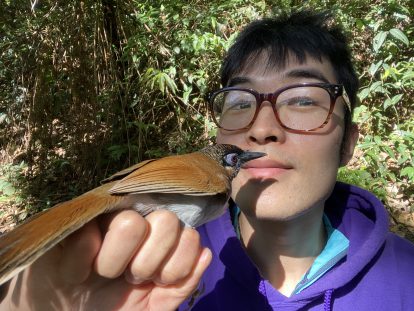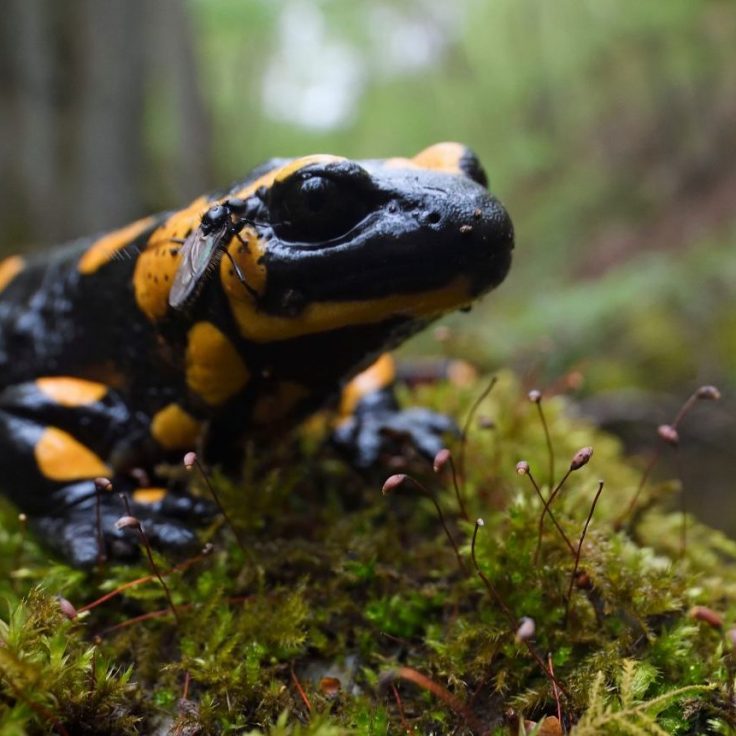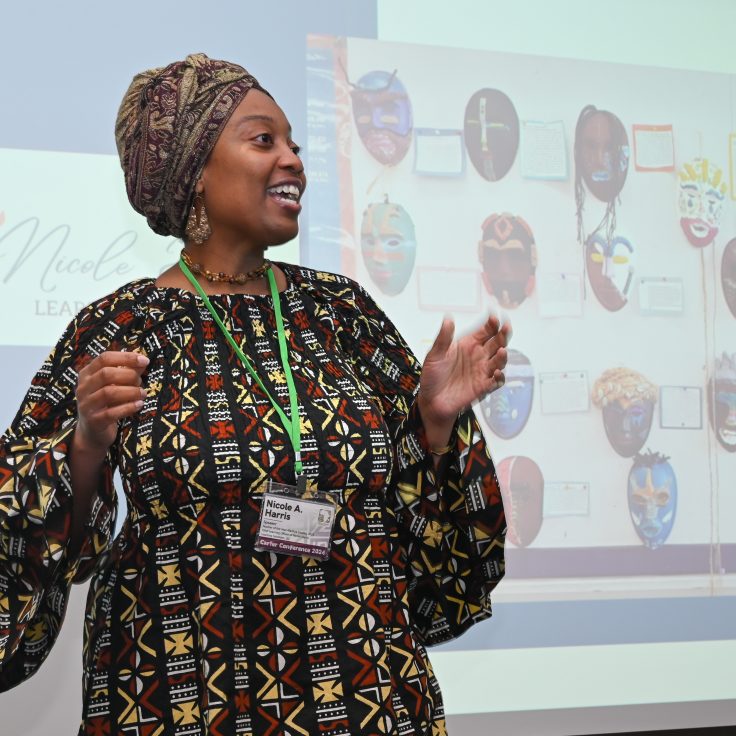
Rare Bird Behavior Observed in Southern China
Graduate student captures rare case of allopreening across species boundaries
Many birds exhibit a social behavior called allopreening, when one bird tidies the feathers of another. This behavior occurs frequently between individuals of the same species. In contrast, allopreening between two different species, or interspecific allopreening, is much less common. Department of Biology graduate student Wenyi Zhou observed this rare behavior on a trip to China, adding his record to the short list of interspecific allopreening cases. According to Zhou, this understudied behavior may not be as rare as previously thought.
In August of 2022, Zhou published an article about his observations of interspecific allopreening in the Nature Notes section of the journal Ecology and Evolution. He also suggests potential reasons why the behavior occurs, including the location of the two species and the need for the birds to establish a social dominance hierarchy.

The discovery occurred while Zhou was traveling in Guangxi for the 2022 Chinese New Year. During a self-guided birding trip through the limestone forests of southern China, his partner Zhuyang Zhang, co-author of the article, noticed the interspecific allopreening behavior from a Spot-necked Babbler (Stachyris strialata) to a Nonggang Babbler (S. nonggangensis). Both species belong to the Old Word babbler family Timaliidae. After seeing a photo she snapped of the behavior, the researchers became fascinated, returning to the same location two more times to observe this rare behavior.
The unexpected location? A bird blind.
A rising form of income, bird blinds are created by local people in China as a hub for bird photography. Birds are fed mealworms, fruit and meat at the food centers. To capture the birds eating, photographers sit behind blinds with their cameras protruding from the openings.
“Birds are attracted to concentrated food resources. This forces species that don’t usually co-occur to interact with each other in these bird blinds,” said Zhou.
Records show interspecific allopreening occurs in captivity. Bird blinds mimic the captive environment because they force birds into proximity. When forced to share space or resources, different species of birds may use allopreening to develop a social dominance hierarchy, or pecking order, Zhou said.
Is the preener or preenee more dominant? Past studies of allopreening within species suggest it could go either way. In some species, subordinate individuals may preen dominant ones to reduce tensions. In other species, however, dominant individuals may preen subordinate ones to assert dominance.
The observed allopreening occurred in bouts and only in one direction — from the Spot-necked Babbler to the Nonggang Babbler. Normally, the larger species is considered more dominant. However, both babblers’ body mass and length were similar, so their hierarchical roles could not be determined.
Zhou witnessed the entire allopreening process during his third observation. It began when the Spot-necked Babbler approached the Nonggang Babbler, perched on a branch, from behind. After being approached, the Nonggang Babbler stretched its neck and lowered its head as an allopreening invitation display, allowing the Spot-necked Babbler access to its neck and later to its flanks and breasts.
One theory suggests that preening of the head and neck may indicate that the behavior serves a hygienic purpose, since those are hard-to-reach areas. If it happens on the wing or breast, an easy-to-reach place, it’s likely because of a social benefit. The observed interspecific allopreening behavior happened on both hard- and easy-to-reach areas.
Scientists still have much to learn about the Nonggang Babbler, which was discovered only 15 years ago. The species remains understudied, in part, due to the bird’s restricted range to the limestone forests in southern China and northern Vietnam.
Other birds have been shown to practice interspecific allopreening at similar social settings. In places such as North America, Guatemala and Mexico, the black vulture and caracara eat dead carcasses thought to be the food center. Colonial nesting seabirds nest in large colonies, sharing a small space.
With more time, records and watchful eyes, Zhou and other scientists can work to understand the trends and patterns associated with interspecific allopreening.
“The behavior is rare, but perhaps not as rare as we thought. If more birders and researchers would pay attention to this behavior, maybe there would be more records, which would eventually allow us to generate patterns,” Zhou said.
Explore the full article here.


